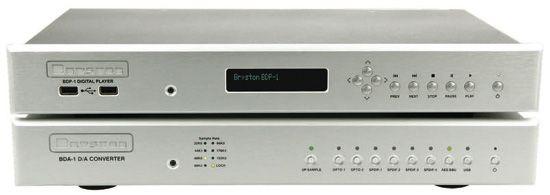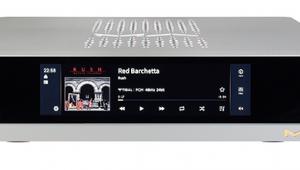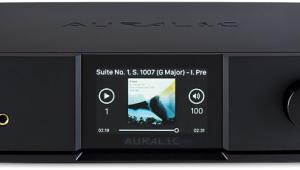Bryston Bdp 1/bda 1 (£2350/2350)

Confronted with the burgeoning of computer audio, manufacturers of conventional hi-fi equipment have reacted in diverse ways. A few have buried their heads in the sand; some have made USB DACs, others hard-disk players, still others streaming network players.
Here, in Bryston’s new BDP-1 we have yet another approach. Inside its slim, chunky box the BDP-1 is a small computer dedicated to just one thing: replaying audio, and from just one source at that – attached USB devices, whether memory sticks or external hard drives.
Moreover, the BDP-1 is digital output only, via unbalanced S/ PDIF on phono sockets or balanced AES/EBU on XLR. So it has to be partnered with an outboard DAC to fulfil its destiny. PMC, Bryston’s UK importer, provided the physically congruent BDA-1 for this review For most of the listening we treated the BDP-1 and BDA-1 as a single component. Our first task was to decide which digital interface to use between them: balanced AES/EBU or unbalanced S/PDIF. It’s tempting to think that because the former is balanced and ‘professional’ it must be better, but audio life is rarely that simple.
Bryston supplies no leads which, given the BNC output on the BDP-1 player (the BDA-1 has a choice of BNC and phono S/PDIF inputs), will probably leave many buyers unequipped to make comparisons. Setting aside general purpose 75ohm BNC leads, we had two BNCBNC S/PDIF cables to hand: a really old one from the early days of the Audiolab 8000 DAC and a current Naim DC1 (cost £235). We also had a PMC-supplied AES/EBU cable and an Apogee Wyde Eye alternative, and so set about comparing the two interfaces and four cable options. At the end of this we had a clear preference for the S/PDIF interface via the Naim cable, the sounded being more snappy and alive.
WHICH DRIVE?
The next comparison to try was replaying the same track from USB flash drive and from USB external hard drive. This might sound like a crazy notion, but Bryston has maximised the potential of USB connection by incorporating galvanic isolation within the BDP-1, to prevent USB ground from contaminating audio ground.
Were there differences? If there were then they were small, but we did form a preference for the flash drive as source. The voluminous acoustic and spirited playing in Mozart’s vivacious March K189, played by the Scottish CO on Linn Records [CKD 287, CD layer] were evident in either case, but we fancied there was just a little more precision to the string sound from the memory stick. We had the same impression on Todd Rundgren’s ‘For Lack Of Honest Work’ from his 1985 album A Cappella [Rhino R2 75761]: a pinch more transparency, but only a pinch, from the flash drive.
Duty done, we could then sit back and enjoy listening to a broad range of programme material. We’ve commented, when reviewing Bryston amps in the past, on a tendency for its products to espouse a reserved style in which lack of grit and grain are more highly prized than ultimate transparency and dynamic panache. We didn’t, we’re delighted to say, feel that way about the the BDA-1.
‘At Sundown’ from The Hot Club Of San Francisco’ [Clarity Recordings CCD-1006] was delivered with its toe-tapping rhythm undiminished, while Anton Webern’s Rasch – a movement from his Five Pieces for Violin and Piano [2L records, 24/96 download] was served up with just the spatial and dynamic precision required to vouchsafe its composer’s intended impact.
VERDICT
The BDP-1 and BDA-1 are capable of making fine music. The downside is that they represent an expensive way of achieving it, the more so as the BDP-1 doesn’t offer network streaming capability or have internal storage, or operate as a UPnP server – conveniences that some rivals do provide.
Originally published in the Yearbook 2011


























































